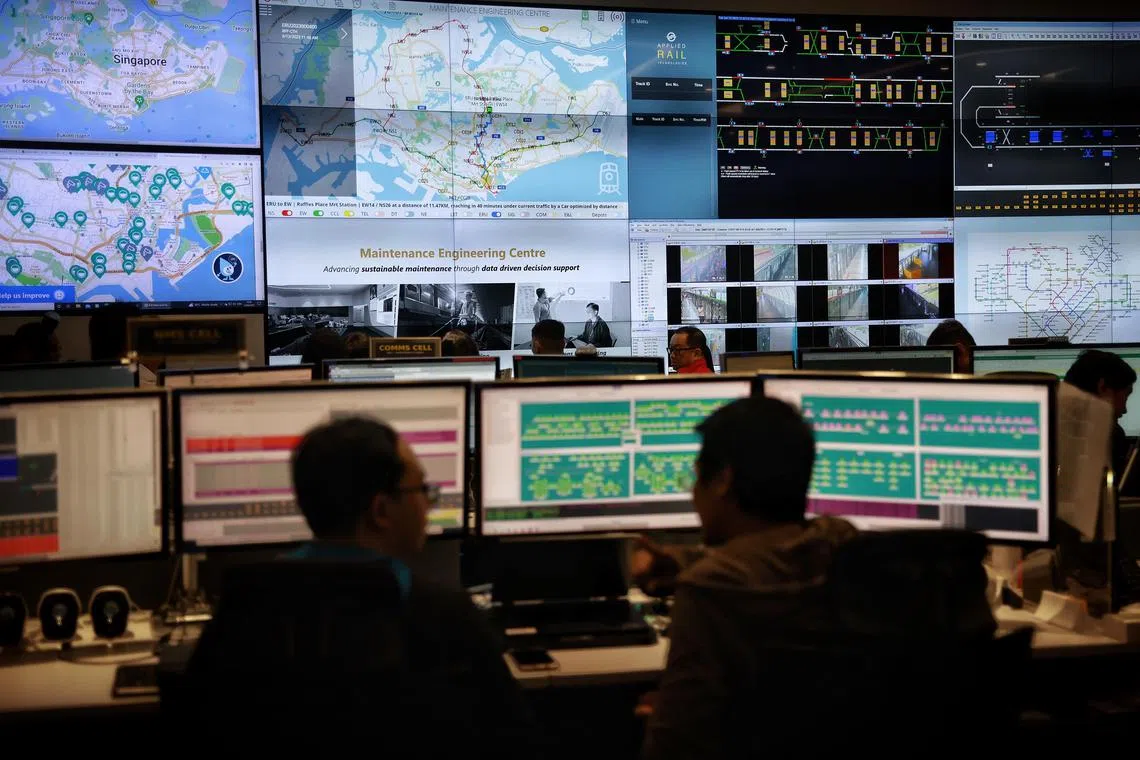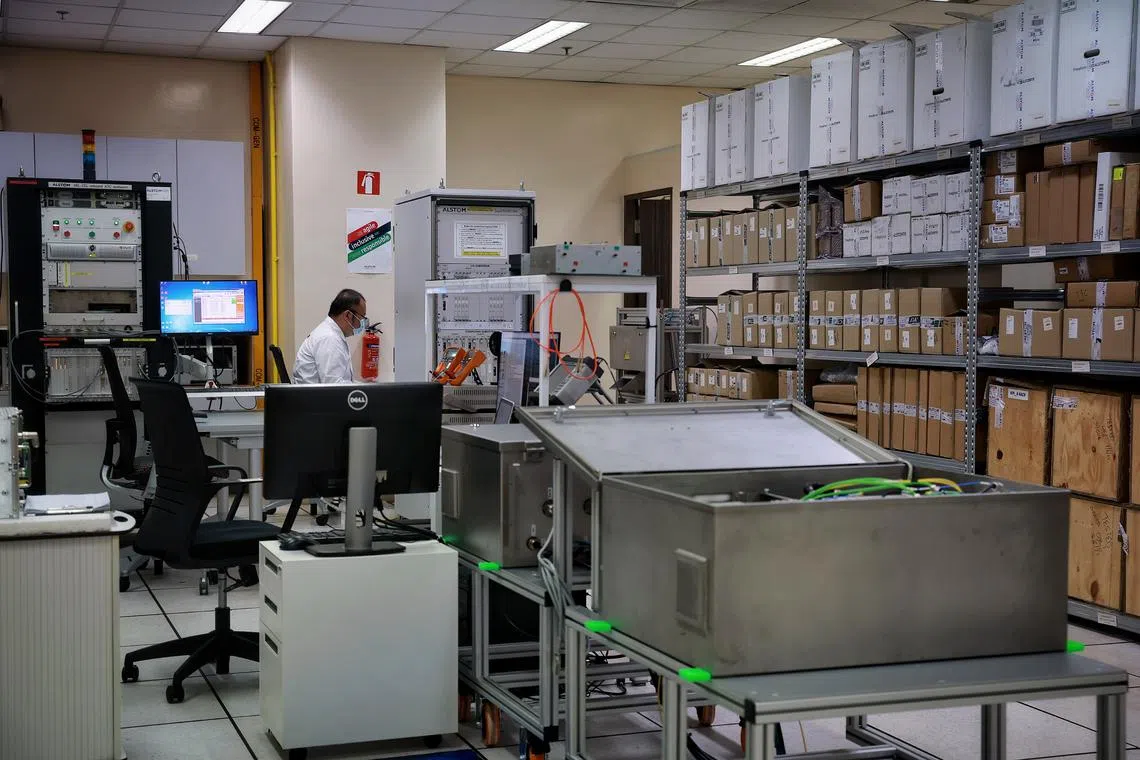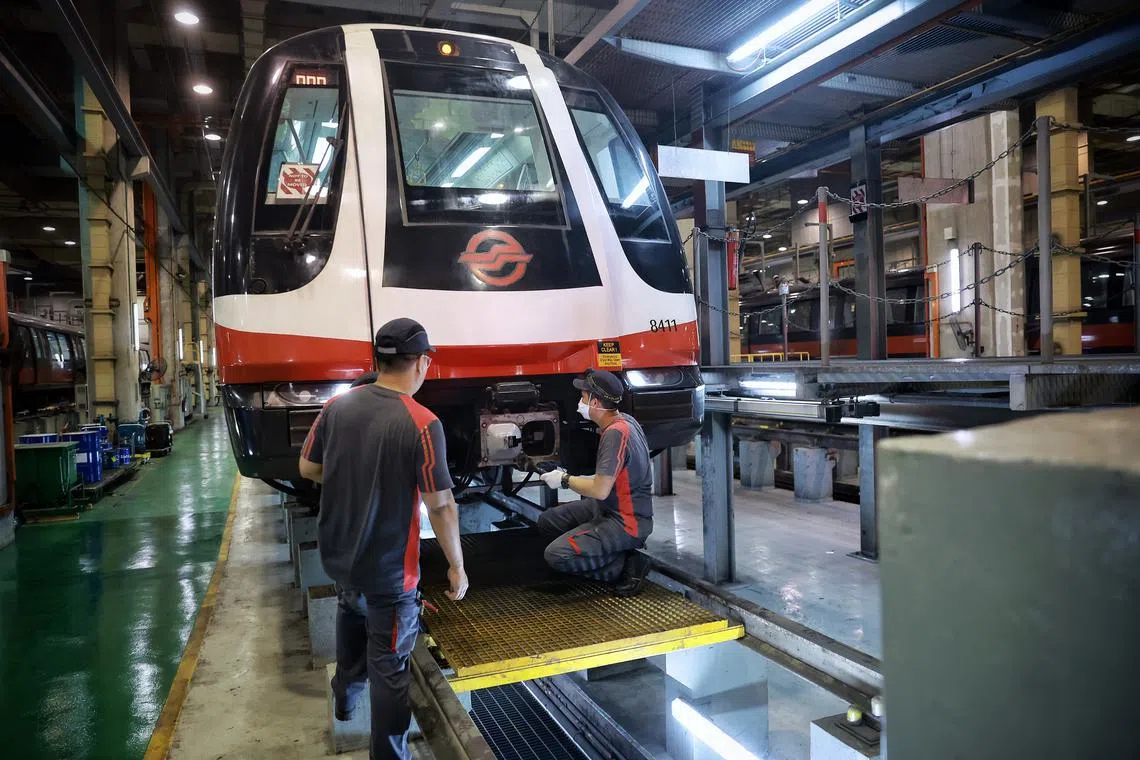SMRT’s noise monitoring system cuts time needed to probe complaints from three days to one
Sign up now: Get ST's newsletters delivered to your inbox

The noise monitoring system is housed within SMRT’s Maintenance Engineering Centre at Kim Chuan Depot.
ST PHOTO: KEVIN LIM
Follow topic:
SINGAPORE - Rail operator SMRT has cut the time needed to investigate noise complaints from three days to one, thanks to a noise monitoring system that it developed in-house.
The system has a centralised database that compiles five sources of information – commuter complaints, track inspection, track maintenance, noise measurement and track access data – which allows SMRT to process information more quickly than before, when each set of data was housed separately.
On average, SMRT receives about 150 noise complaints from residents annually.
The system, housed within SMRT’s Maintenance Engineering Centre (MEC) at Kim Chuan Depot, is among the features that the company has created to improve operations and overall service reliability.
Spanning around 3,500 sq ft, the MEC monitors and controls the maintenance activities of the North-South, East-West and Circle MRT lines.
The Thomson-East Coast Line will be added in the coming year, said SMRT.
The Straits Times had an exclusive tour of the centre, which was set up in consultation with the Land Transport Authority (LTA) in November 2022 and opened officially in April this year.
The main portion of the MEC has a wall of screens projecting real-time train operations on individual MRT lines, water levels at various canals, and live footage from the battery of closed-circuit television cameras positioned in MRT stations, among other information.
The operation engineering office, which houses 10 analysts, forms the other part of the MEC.
The MEC operates around the clock, covering operations during both operating hours and engineering hours after service ends throughout the year.
Besides the noise monitoring system, SMRT has also created digital dashboards to keep tabs on other aspects of its rail operations – including rolling stock, or trains, signalling, track work, as well as infrastructure.
For the rolling stock dashboard, for example, six different areas that reflect the mission-critical sub-systems are measured and monitored to ensure that the trains are operating properly.
The information from these dashboards allows SMRT staff to respond more quickly to issues that arise, and determine the course of action to be taken – for instance, whether to remedy the problem during or after service hours.
SMRT said the MEC also improves the way it plans maintenance work, as the information provided helps staff to monitor the condition of various components, and allows them to prioritise what to maintain first and the resources needed.
Mr Lam Sheau Kai, president of SMRT Trains, said that by integrating its engineering expertise with data analytics, the operator is able to respond more quickly and accurately, and pre-empt potential issues and reduce disruptions.
“Ultimately, commuters benefit the most from this, with safer and more reliable journeys on our network,” he added.
Traditionally, maintenance regimes are based on preset intervals, whether by time duration or number of kilometres travelled, rather than the actual condition of the components. Components wear down differently across train models and fleets.
By doing maintenance based on the condition of the components instead of relying solely on the prescribed intervals set by the equipment manufacturers, SMRT said it can avoid wastage from prematurely changing out parts that are still in good condition.
In addition, SMRT said it started incorporating predictive technology in earnest into its maintenance regime around six months ago.
The predictive system uses an algorithm to learn and understand the wear and tear of various components based on condition monitoring data, and projects how these parts will perform in the future.
The rail operator said it wants to be able to fix things before they break, and improve overall service reliability in a cost-effective manner.
SMRT did not give an estimate of how much improvement in reliability is expected, saying the complex nature of the predictive algorithm demands extensive testing before it can be put into full operation. The operator intends to measure the full benefit of using the algorithm after it has been used for a full year.
The MEC began as a trial that the LTA conducted in 2018 to have a hub to consolidate data for rail operation maintenance works and diagnostics.
Also located within the Kim Chuan Depot is the on-site office for Alstom, which provided the Circle Line’s (CCL) systems.

French company Alstom’s on-site office at Kim Chuan Depot.
ST PHOTO: KEVIN LIM
SMRT signed a 16-year servicing contract for the CCL with Alstom in 2020, with the French company providing spare parts, repairs, obsolescence management and technical support for the line.
As part of the collaboration, condition-monitoring equipment has been installed to test the strength of the CCL’s signalling system during normal operating hours without disrupting service.
The process of checking the condition of the whole line can now be completed within a single day, SMRT said.

Maintenance work being carried out by engineers at Kim Chuan Depot.
ST PHOTO: KEVIN LIM
It took a year to finish testing the entire line previously, when inspections could be done only during the engineering hours after train service ends.
Alstom has also set up on-site offices at the Tuas and Changi depots to support SMRT’s operations. In a social media post last Friday, SMRT said this arrangement will “ensure swift rectifications of anomalies on the East-West Line”.


